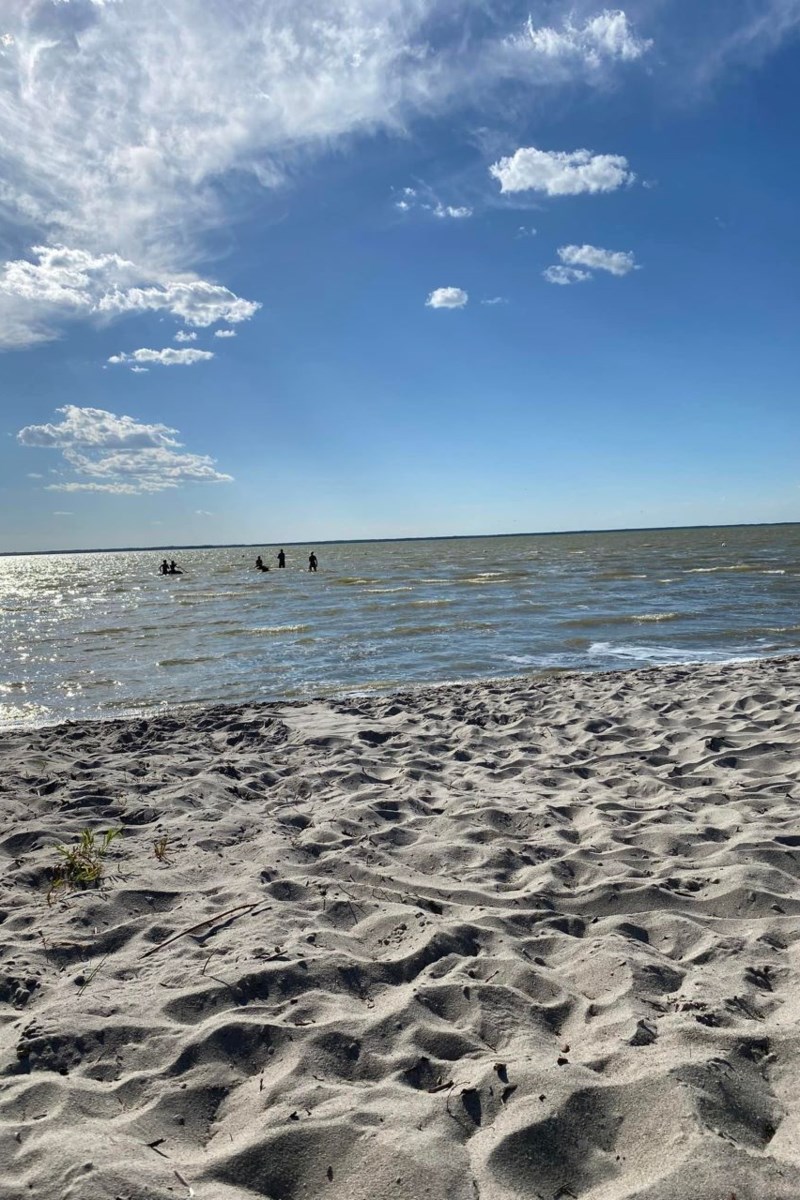The sweltering summer afternoon at Pasqua Lake told two different stories. Children splashed along the shoreline, their laughter carrying across the water as parents lounged on colorful beach towels. But just steps away, bright yellow signs warned visitors of an invisible threat lurking in the inviting waters: dangerously high levels of E. coli bacteria.
“We came all the way from Regina for our annual family weekend,” said Melissa Desjarlais, mother of three, gesturing toward her children who were now reluctantly building sandcastles instead of swimming. “Now we’re trying to explain why they can’t go in the water without scaring them.”
The Saskatchewan Health Authority issued warnings this week for several popular recreational lakes across the province, including Pasqua, Echo, Katepwa, and Crooked Lakes in the Qu’Appelle Valley system. Water samples revealed E. coli concentrations exceeding the safety threshold of 200 E. coli per 100 milliliters of water – in some cases, by several times that amount.
Dr. Tania Diener, Saskatchewan Health Authority’s Medical Health Officer, explained that while E. coli itself isn’t always harmful, its presence signals something concerning. “E. coli is an indicator organism. When we find it in high numbers, it tells us there’s likely fecal contamination in the water, which may contain other disease-causing pathogens.”
Most E. coli strains are harmless gut bacteria found in humans and animals. But their elevated presence in recreational waters typically results from agricultural runoff, wildlife waste, storm events, or even human sources like inadequate septic systems around lake properties.
For those exposed, the health risks range from mild to severe. “Most commonly, people experience stomach cramps, diarrhea, and vomiting,” Dr. Diener said. “But we worry especially about young children, elderly individuals, and those with compromised immune systems who may develop more serious complications.”
When I visited Echo Lake yesterday, the beach was notably emptier than usual for a July weekend. Local business owners are feeling the impact. Marina Petersen, who runs a small ice cream stand near the public beach, says her sales have dropped by nearly half since the warnings went up.
“This is our busiest season. We depend on lake visitors,” Petersen said, arranging colorful popsicles in her freezer case. “But I understand why people stay away. Health comes first.”
The timing couldn’t be worse for Saskatchewan’s lake communities, many of which rely heavily on summer tourism. The provincial economy sees millions in revenue from recreational water activities each year, according to Tourism Saskatchewan data. But this isn’t the first time bacterial contamination has threatened both public health and local economies.
Saskatchewan’s agricultural landscape contributes to the problem. The province has approximately 40% of Canada’s cultivated farmland, according to Statistics Canada. After heavy rain events, which have become more frequent due to climate change, agricultural runoff can carry animal waste, fertilizers, and other contaminants into waterways.
Professor Lalita Bharadwaj, an environmental health researcher at the University of Saskatchewan, has studied water quality in prairie watersheds for over a decade. She points to multiple factors contributing to the current situation.
“We’re seeing a perfect storm of conditions,” Bharadwaj explained. “Hot temperatures speed bacterial growth, agricultural intensification increases potential pollution sources, and aging infrastructure around some lakes means septic systems may not be functioning adequately.”
Indigenous communities have raised concerns about water quality in these systems for generations. The Pasqua First Nation, whose traditional territory includes areas around affected lakes, has documented changes in water quality over decades.
“Our Elders talk about swimming and fishing in these waters without worry,” said Community Elder Joseph Stonechild. “Now we’ve lost that connection to the water that was central to our culture and traditional practices. The contamination we’re seeing is just one symptom of a deeper imbalance.”
The SHA recommends anyone who has been in affected waters to shower thoroughly afterward and to seek medical attention if they develop gastrointestinal symptoms or infected cuts. Children and pets are particularly vulnerable, as they tend to swallow more water while swimming and playing.
For communities seeking solutions, the Saskatchewan Watershed Authority has been working with landowners on mitigation strategies. These include creating vegetative buffer zones along waterways, improving manure management practices, and upgrading septic systems around recreational properties.
Some lake associations have taken matters into their own hands. The Katepwa Lake Watershed Association initiated weekly volunteer water quality monitoring to supplement provincial testing, creating an early warning system for residents.
“We can’t wait for official tests when our community’s health and livelihoods are at stake,” said Association President Diane Burkhart. “Our volunteers are trained to collect samples properly, and we work closely with certified labs for analysis.”
Back at Pasqua Lake, the Desjarlais family decided to make the best of their weekend despite the swimming ban. They brought board games and extra sunscreen for beach activities that keep them dry.
“It’s disappointing, but we understand it’s necessary,” Melissa said as her husband set up a volleyball net. “We’re talking with the kids about water systems and how everything is connected. They’re learning that taking care of the environment means taking care of each other too.”
Provincial health officials expect the advisories to remain in place for at least another week, depending on new test results. They remind visitors that while swimming and water activities are restricted, the beaches themselves remain open for other recreational uses.
For up-to-date information on beach advisories, residents can check the Saskatchewan Health Authority website or call their local public health office before heading out to lakes this summer.






